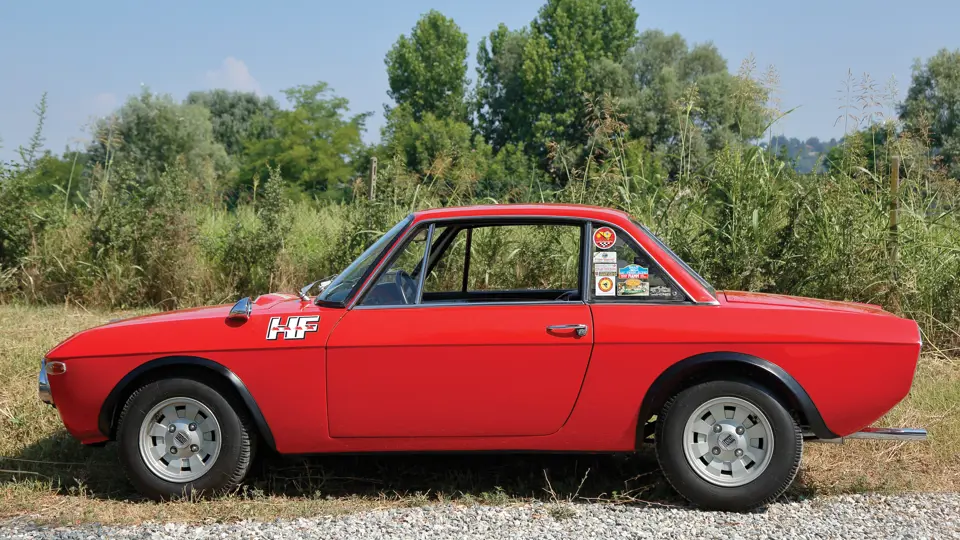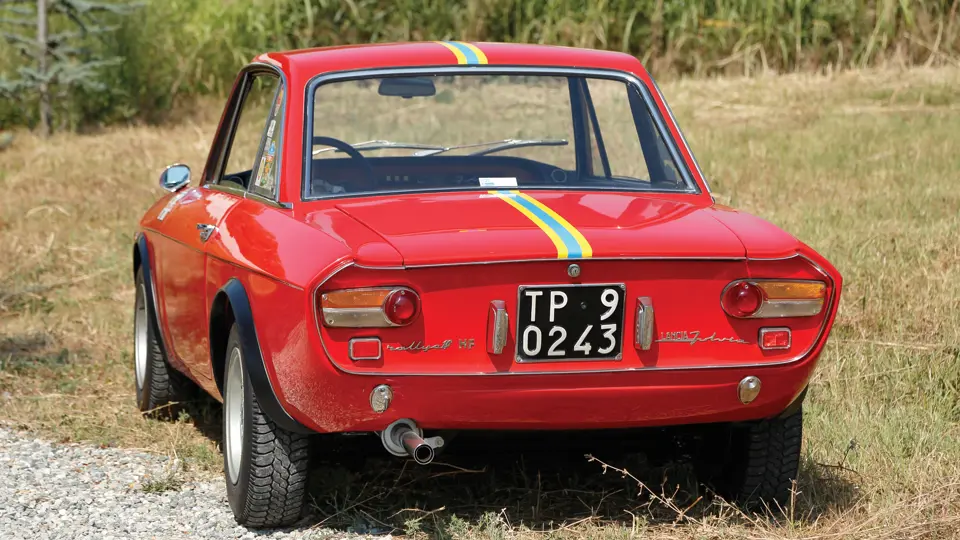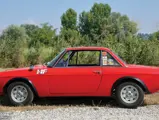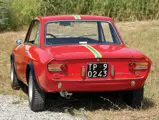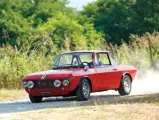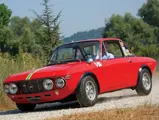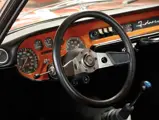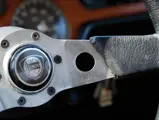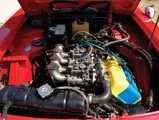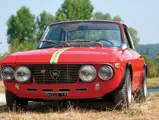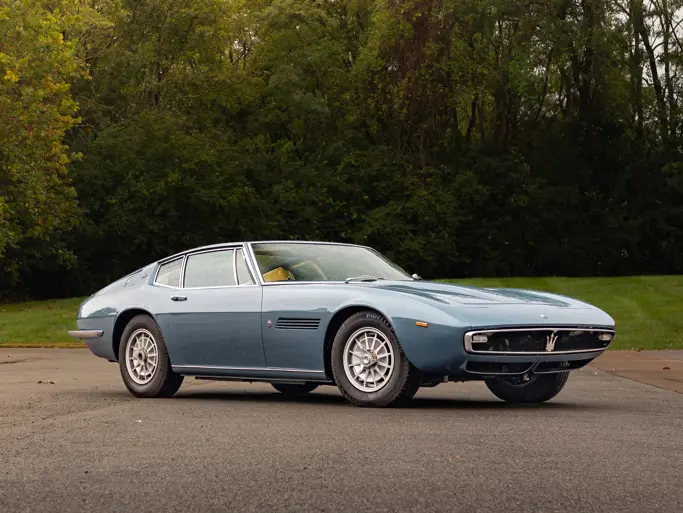115 bhp, 1,584 cc V-4 engine with two Solex C42 DDHF double-sidedraft carburettors, five-speed manual transaxle, front double-wishbone suspension, live rear axle, and four-wheel disc brakes. Wheelbase: 2,330 mm
After a decade’s hiatus from racing, in 1965 Lancia re-established a competition department, the Reparto Corse, and began to focus on the Fulvia Coupé, which began production that same year. Adopting the “High Fidelity” logo from privateer HF Squadra Corse, Lancia developed a series of lightweight homologation specials based on the standard Fulvia Coupé. The first HF Coupé was based on the original 1,216-cubic centimetre Coupé, but in the interest of weight reduction, Lancia removed the bumpers, replaced the standard car’s steel doors, bonnet, and boot lid with alloy pieces, replaced the side and rear glass with acrylic, and deleted all undercoating and sound deadening. The engine was tuned with a special head, hotter cams, and larger carburettors for a useful increase in power. The 1967 introduction of the 1,298-cubic centimetre engine in the standard Fulvia Coupé saw the development of the 1.3 HF, which followed the same pattern as its predecessor.
Whilst the HF and 1.3 HF achieved credible results on both the circuit and rally stage, it became clear that more power would be required to seriously contend for championships. To achieve that, Lancia decided to develop the 1.6 HF, a 1,584-cubic centimetre variant with no standard coupé equivalent. Because the rules allowed only two auxiliary lights, the main beams were replaced by Carello driving lights, which were larger and more prominent, leading to the nickname “Fanalone”, which literally means big headlights. In 1969, Group 3 homologation required 500 examples, but because this would double by 1971, Lancia built 1,258 between late 1969 and mid-1970, with a further 20 chassis about a year later to replenish the Works rally team. The 1.6 HF gave Lancia the competitive edge it needed, winning events starting in 1969 and a world championship—Lancia’s first—in 1972. The car contributed to world championship points until 1974, when it was replaced by the legendary Stratos.
Chassis number 001645, the 645th built, is a typical stradale example, whose authenticity has been confirmed by the matching body stamp, and it is fitted with a 115-brake horsepower twin-cam engine. The short and light narrow-angle V-4 contributes to the car’s agility and vice-less handling, without a trace of torque steer. The valve cover bears the hallmark yellow/blue/yellow “HF” stripe, which also appears on the Rosso Corsa body. The Lancia was first registered in Trapani, Italy, in May 1970 and it has remained in its home country ever since. The car currently displays just 33,724 kilometres, which is believed to be the original mileage. In 2008, it was acquired by the previous owner as part of a large collection, and it has seen limited use in recent times. Today, the car presents as very original, with only minor period-correct modifications, including the installation of a desirable Ferrero HF steering wheel, as used on the Works cars.
This Fanalone would undoubtedly make for a fantastic drive on any number of historic rallies, especially with its namesake headlights leading the way!





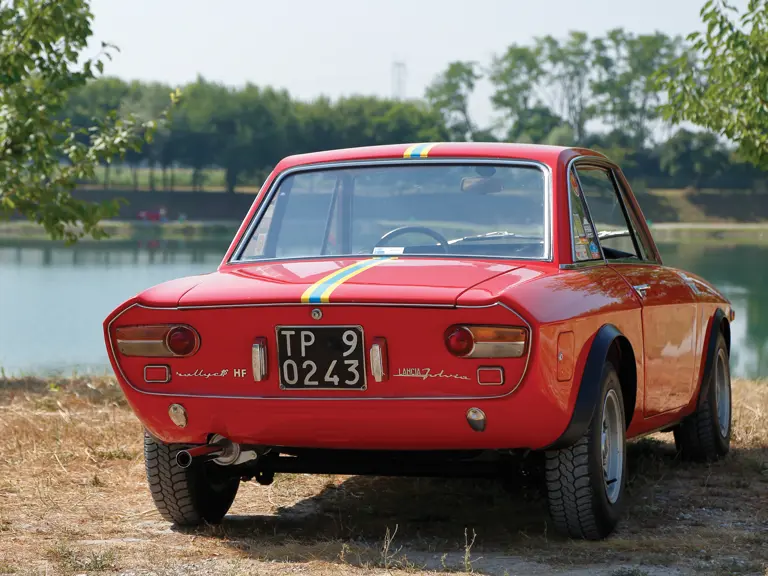
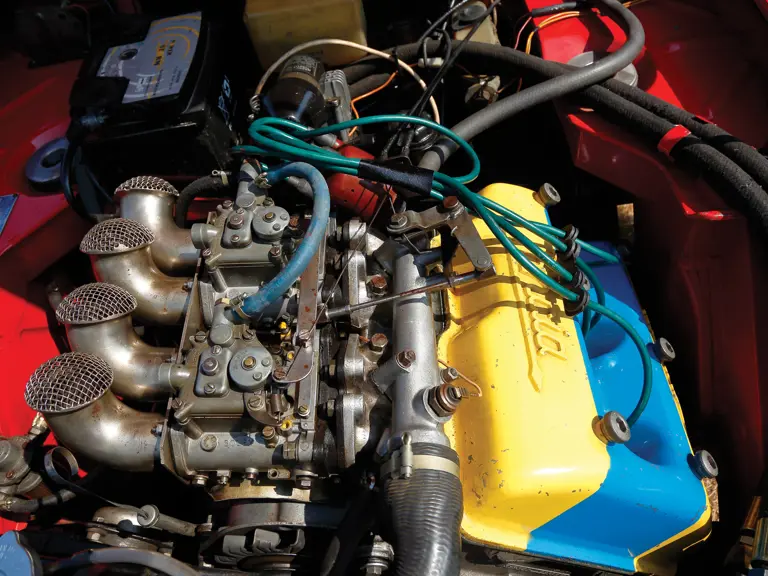
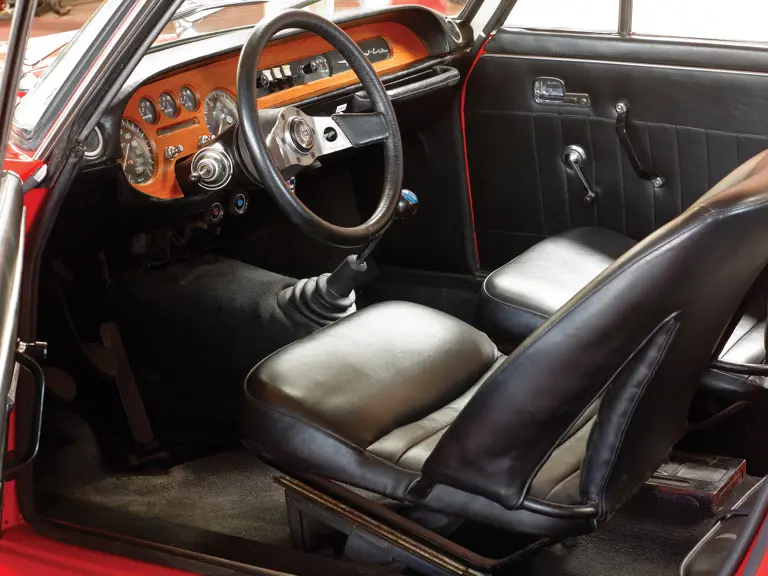
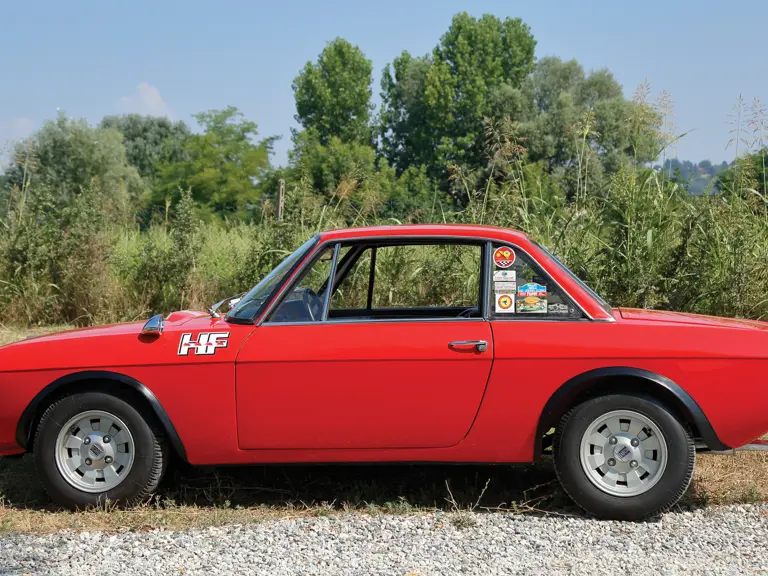
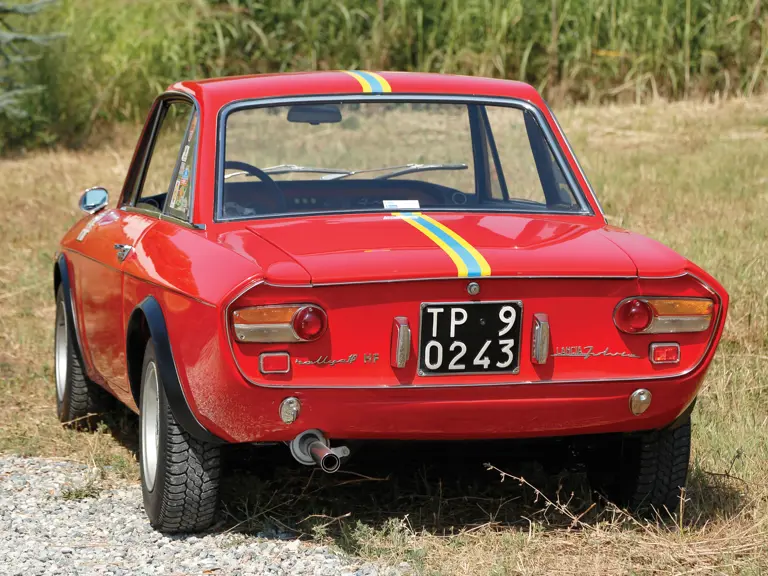

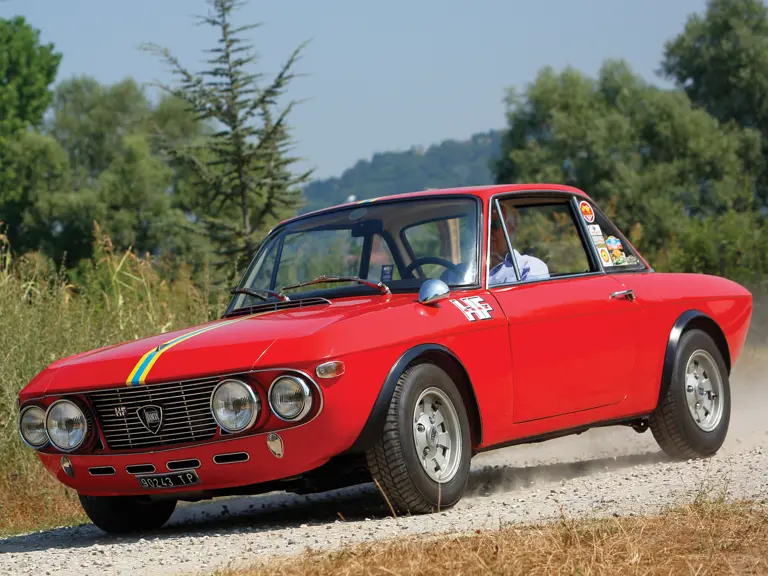

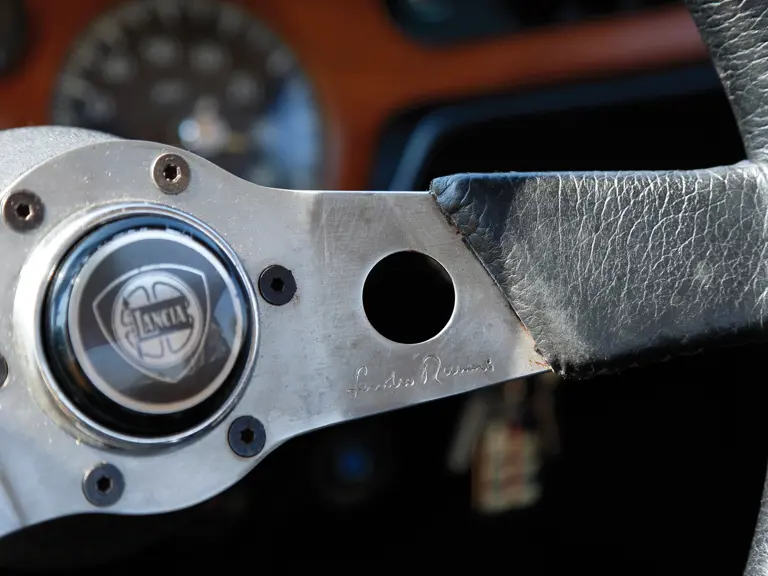


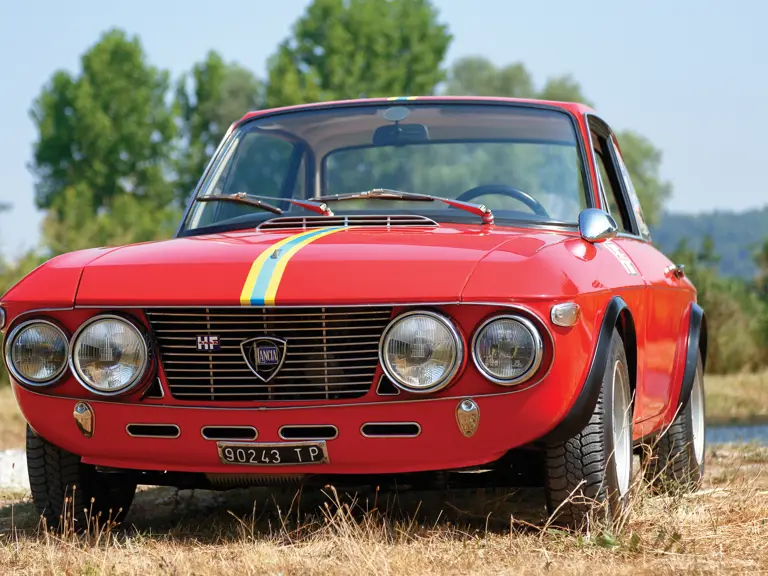
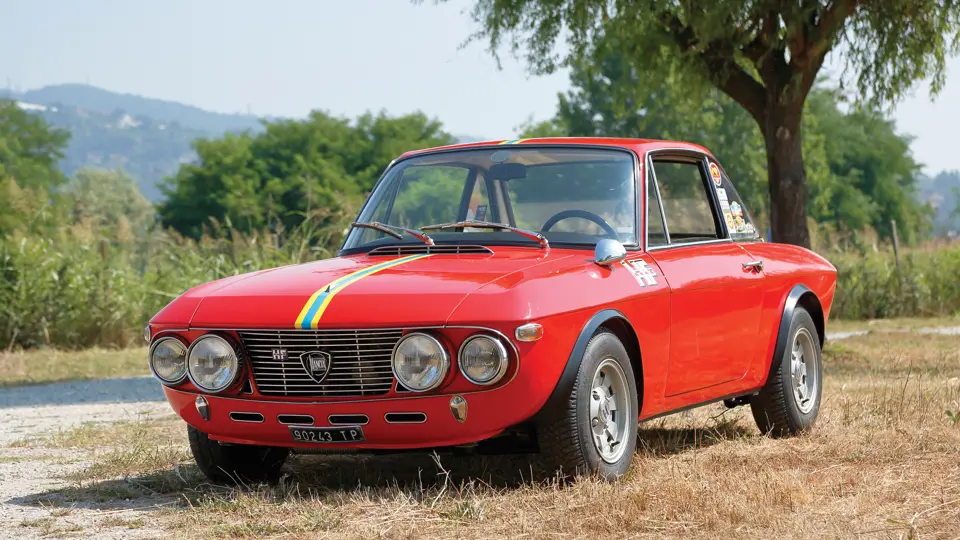
 | London, United Kingdom
| London, United Kingdom
